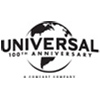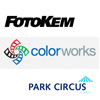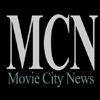
Behind the Scenes of the Film about the Olympic Games 1936
The Making of Leni Riefenstahl’s Olympia
Saturday, December 8
4:30pm
Free Public Program
_______________________________
- Runtime: 35 minutes
- Directed by: Rudolf Schaad
In the spring of 1937 Leni Riefenstahl had only just started editing the 1st part of her magnum opus Olympia and it became clear that the film would not be ready for another year. The German authorities, who were financing the film, began to fear that these delays would have a negative impact on the future commercial success of the two Olympia films and so it was decided to create a promotional film, in English and in French, in order to maintain public interest for the film.
This promotional film was directed by Leni Riefenstahl’s technical assistant Rudolf Schaad, who was aided by her managing director Walter Traut. They mainly used the material shot by Otto Lantschner, who had been appointed by Riefenstahl to follow her and her cameramen at work during the filming of Olympia.
The film was premiered at the Paris International Exhibition on July 2nd 1937 under the auspices of the German State’s Film Chamber. On that occasion Riefenstahl gave a speech explaining why it was taking so long to put Olympia together recognizing that she always knew the films would not be ready before early 1938. First there was the need to sort out the 1,200,000 feet of film and 90,000 feet of sound, then screening the dailies took another 2.5 months. Only after that had been done could she actually start the editing and sound track building which would take 6 months for each of the two Olympia films.
In the following month this promotional film was screened again at the 5th Mostra film festival in Venice in 1937, but thereafter it seemed to have been virtually lost for over 80 years.
Restored for the International Olympic Committee in 2008-9 by Cineric in New York this will be the first screening of the restoration, and probably the very first screening of the film, in the US.
The film was painstakingly re-built by Cineric’s Tom Heitman from the original nitrate negative elements, using the complete sound negative and handwritten notes on the picture and sound neg as the only guides. A partial 16mm Japanese subtitled print from the Library of Congress also offered some reassurance on the veracity of the work.
Using materials primarily provided from Germany as well as two scenes from a partial print from the National Film Center, Tokyo, all but five shots were found. These shots have been integrated into a montage from other materials from Olympia, and are similar in nature to those at the start and the end of the montage or are suggested by the original audio track for the montage.
The element screened will be a 35mm polyester print from the 4K digital negative created by Cineric. Audio restoration was carried out by John Polito of Audio Mechanics in Burbank.
Finally, our heartfelt thanks must go to Horst Kettner and Gisela Jahn of Leni Riefenstahl Produktion for their untiring efforts in assisting us in our restorations of this film and Olympia.






